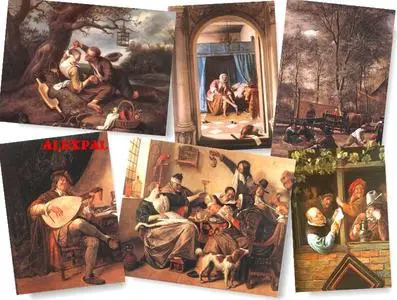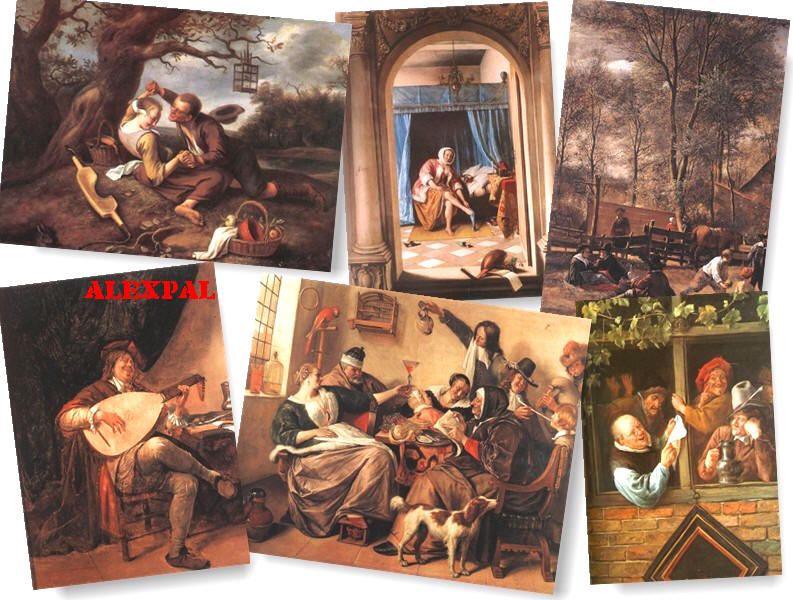Art by Jan Steen
54 JPG | 800x1000 | 11 Mb
54 JPG | 800x1000 | 11 Mb
Jan Havickszoon Steen (c. 1626 – buried February 3, 1679) was a Dutch genre painter of the 17th century (also known as the Dutch Golden Age). Psychological insight, sense of humour and abundance of colour are marks of his trade.
Steen was born in Leiden, where his well-to-do, Catholic family had run the tavern The Red Halbert for several generations. Like his even more famous contemporary Rembrandt van Rijn (1606 - 1669) Jan Steen attended the Latin school in Leiden. He received his painterly education from Nicolaes Knupfer (1603-1660), a German painter of historical and figurative scenes in Utrecht. Influences of Knupfer can be found in Steen's use of composition and colour. Another source of inspiration was Adriaen van Ostade (1610 - 1685), painter of rural scenes, who lived in Haarlem. Whether Steen actually studied with Ostade is not known.
In 1648 Jan Steen joined the painters\' Guild of Saint Luke at Leiden, but soon after became an assistant to the renowned landscape painter Jan van Goyen (1596-1656) and moved into his house on the Bierkade in The Hague. On Oct 3, 1649 he married van Goyen\'s daughter Margriet, with whom he had eight children. Steen worked with his father-in-law until 1654, when he moved to Delft, where he ran brewery De Roscam (The Curry Comb) without much success. He lived in Warmond from 1656 till 1660 and in Haarlem from 1660 till 1670 in which period he was especially productive. In 1670, after the death of his wife in 1669 and his father in 1670, Steen moved back to Leiden, where he stayed the rest of his life. In April 1673 he married again, with Maria van Egmont, who gave him another child. In 1674 he became president of the Sint Lucas Guild. He died in Leiden in 1679 and was interred in a family grave in the Pieterskerk.
Daily life was Jan Steen\'s main pictorial theme. Many of the genre scenes he portrayed are lively to the point of chaos and lustfulness, even so much that a Jan Steen household, meaning a messy scene, became a Dutch proverb (een huishouden van Jan Steen). Subtle hints in his paintings seem to suggest that Steen meant to warn the viewer rather than invite him/her to copy this behaviour. Many of Steen\'s paintings bear references to old Dutch proverbs or literature. He often used members of his family as models. Jan Steen painted also quite a few self-portraits, in which he showed no tendency of vanity.
Steen did not shy from other themes: he painted historical, mythological and religious scenes, portraits, still lifes and natural scenes. His portraits of children are famous. He is also well known for his mastery of light and attention to detail, most notably in textiles. Steen was prolific, producing about 800 paintings, of which roughly 350 survive.
Steen\'s work was valued much by contemporaries and as a result he was reasonably well paid for his work. He did not have any students, but his work proved a source of inspiration for many painters.
Download from Easy-Share
or
Download from Depositfiles
or
Download from Rapidshare
My Graphics Blog: Welcome!
No MIRRORs below!



